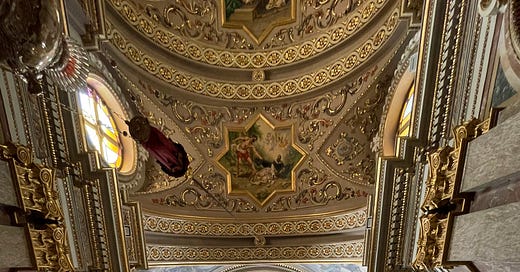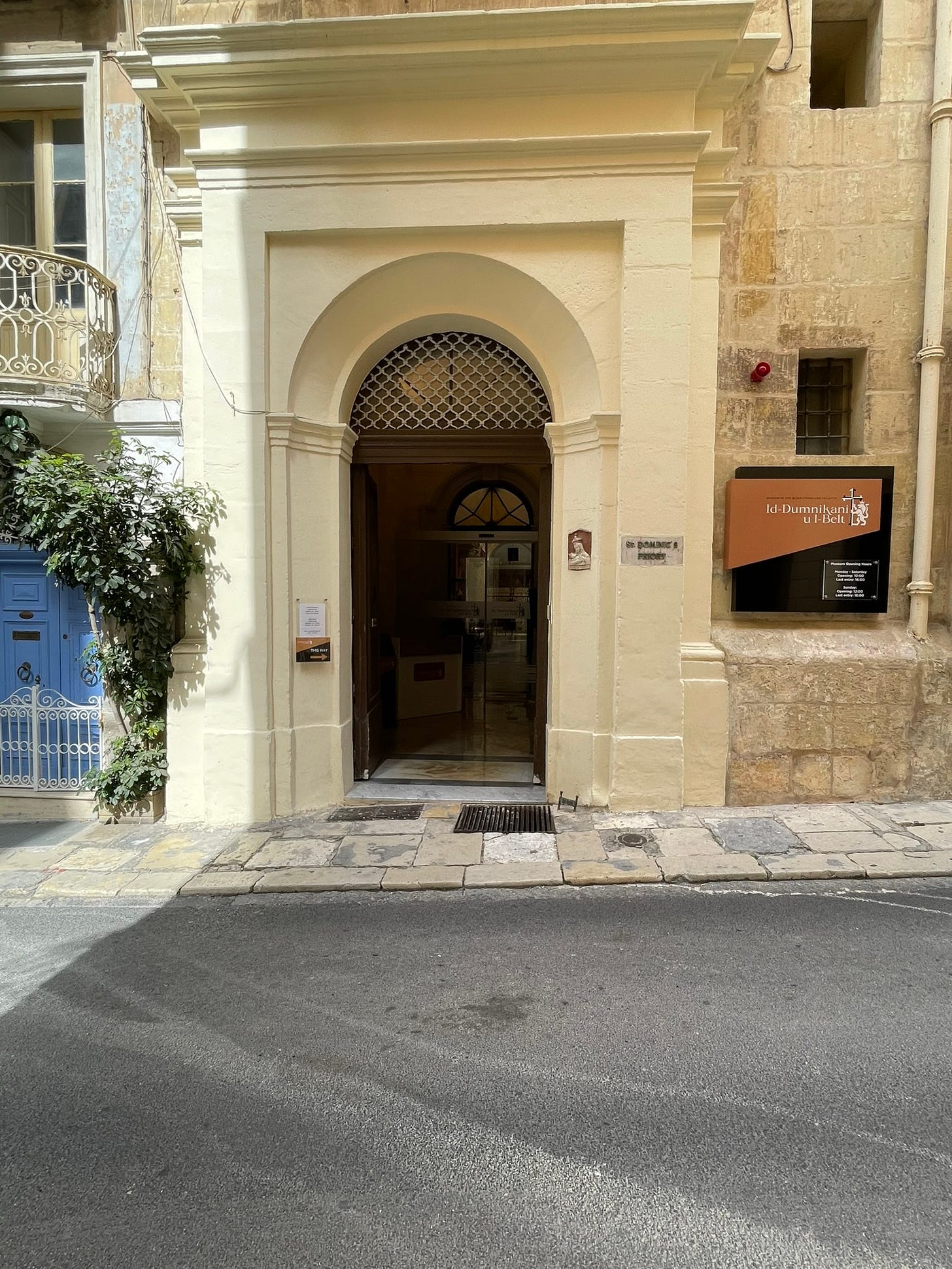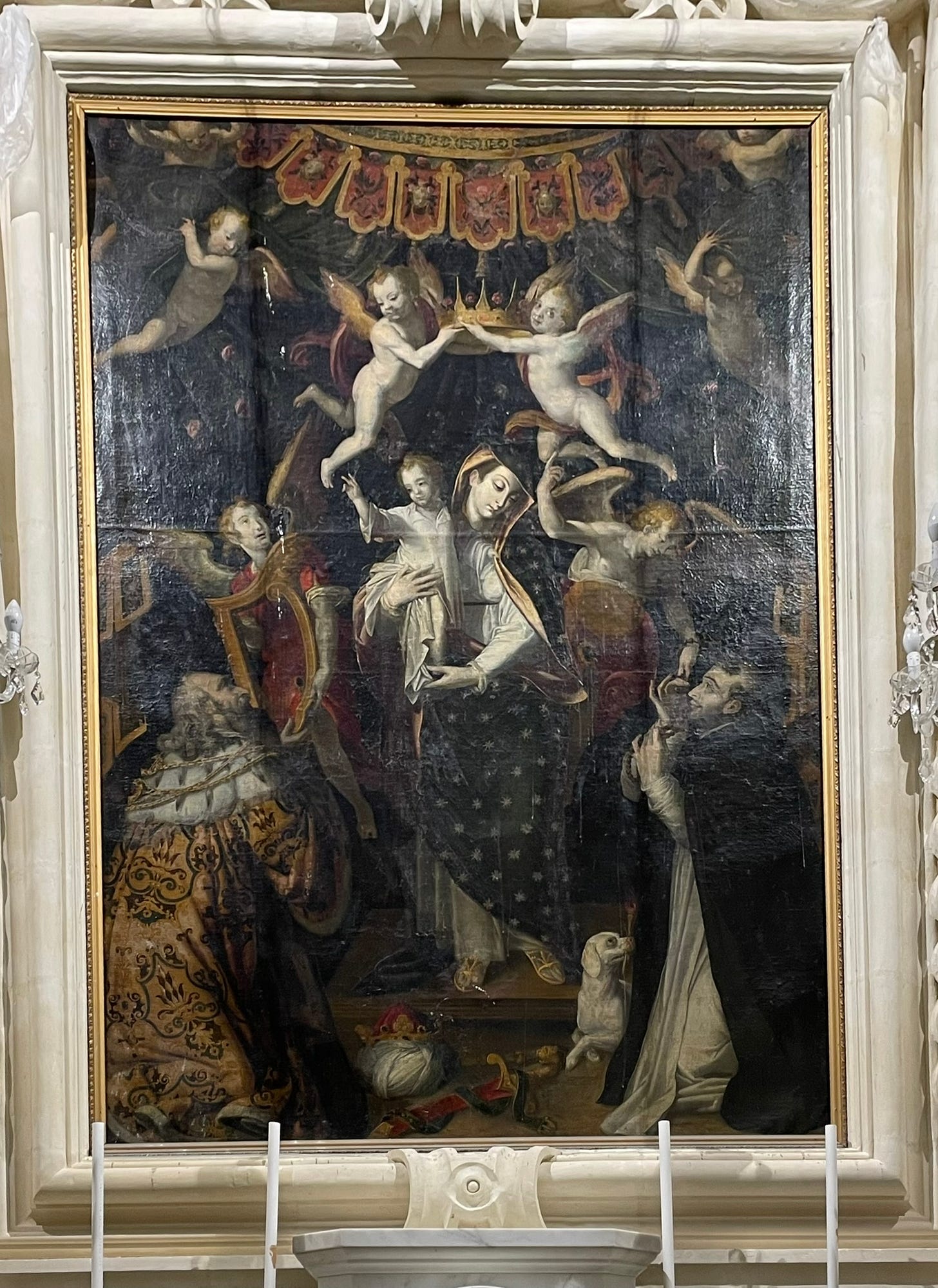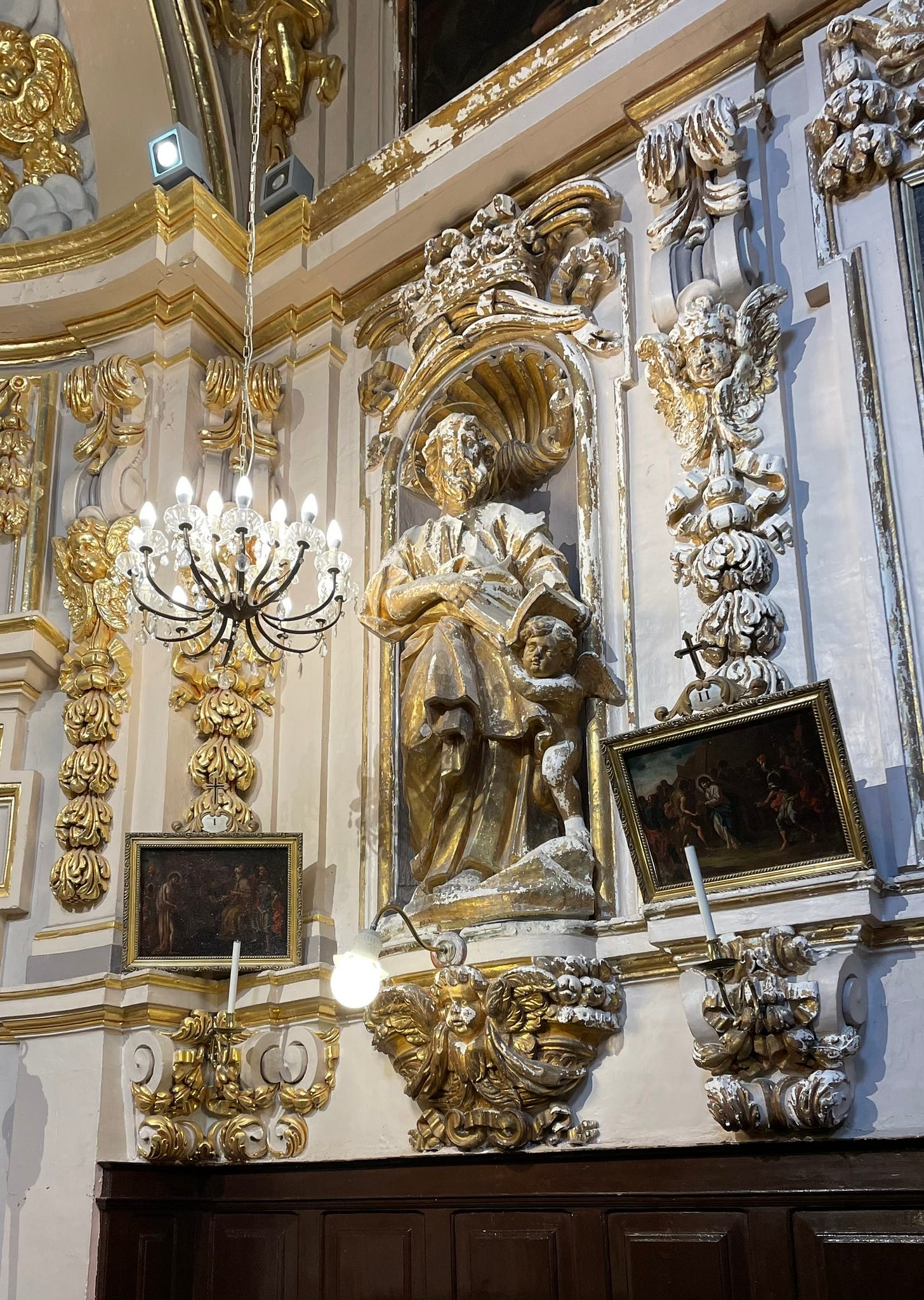After the fascinating traditions of Easter we’re at a very recently opened site this week, the Valletta Blackfriars Experience, this is the home of the Dominican Order in Valletta, the monks known as the Blackfriars due to their black habit. It seems like lots of long established monasteries are opening their doors in Malta, way back in November I went to Mysterium Fidei, home of the closed order of St Catherine’s monastery, a few have opened in Mdina and Rabat and now the Dominican Order.
I’ve learnt a fair amount about the religious orders since then and their relation to the Catholic Church after the Council of Trent, the reaction to the Protestant Reformation. It was the Council that decreed that female orders should be enclosed, I struggled with this when I went to Mysterium Fidei as you may recall, to then learn about the decision at the Council of Trent mystified me even further. Male orders weren’t enclosed but, all orders, including the Knights of St John, were to live lives of poverty, chastity and charity.
How this played out in reality is to say the least, complex, strange to twenty-first minds and fascinating! It’s interesting then to see so many convents and monasteries opening their doors to the public now. Of course, the fabric of these sites is costly to maintain and I imagine that is part of the reason but one hopes that it is also about sharing these quite incredible cultures and ways of living.
The museum is accessed from the entrance to two Oratories, these are small chapels that are often private and separate from the main church. These two were maintained by Confraternities, which are lay associations that support the running of the church, both by engagement in voluntary work and financially. We’re in the Baroque so everything is on another level visually, the first one is the Oratory of the Archconfraternity of Our Lady and the Holy Rosary and Mercy. It was established in 1575 and is a beautiful chapel, it was hit during WW2 and restored, so most of the paintings in here are relatively new, they’re by Maltese artist Manwel Farrugia and depict episodes in the life of St Dominic.
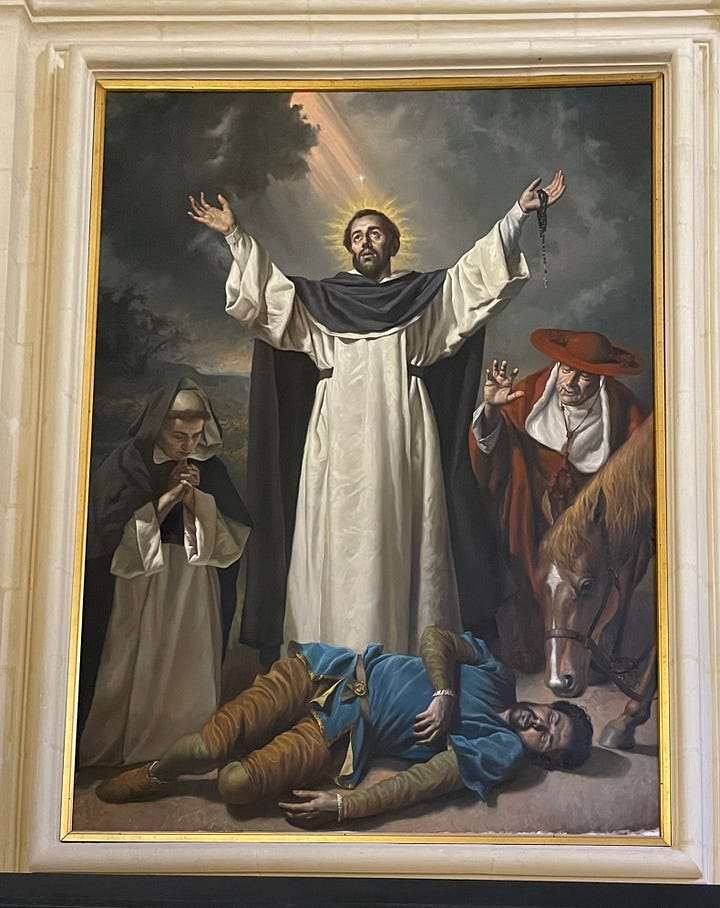
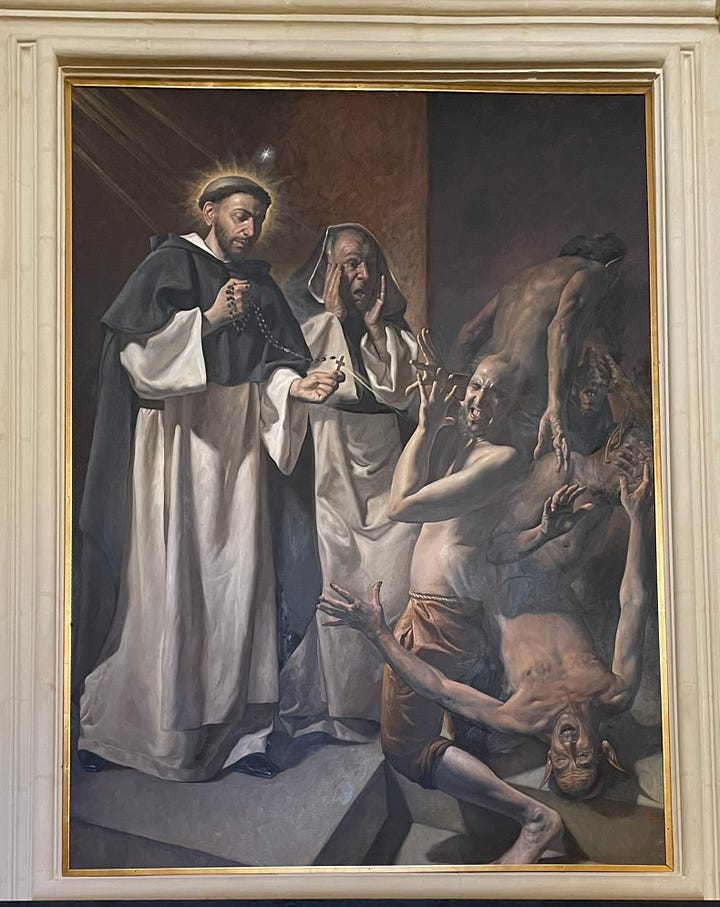

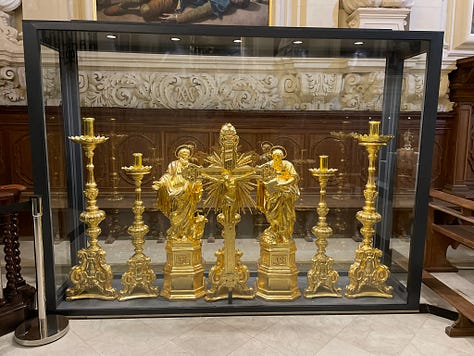
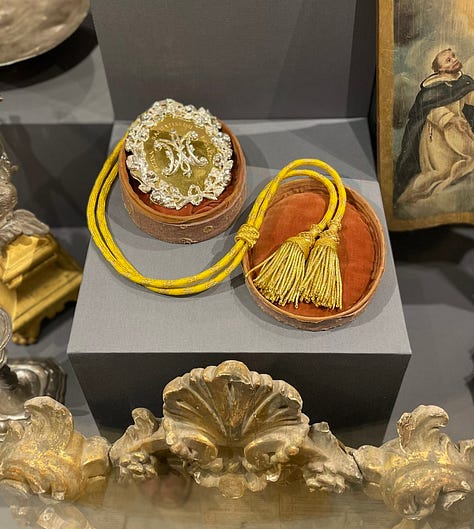
The original titular painting of Our Lady of the Holy Rosary did survive, it’s quite stunning, one of the most beautiful paintings I’ve seen in Malta so far, and I’ve seen a few now! It’s interesting in that it’s not typically Baroque, in fact it has that Northern Renaissance look to it especially in the fine detailing, the cloak of the sponsor kneeling the altar, the objects at the foot of the Madonna, the details of the dog, they all remind me of older altarpieces.
The Oratory has been restored and looks fresh, the next one, the Oratory of the Archconfraternity of the Blessed Sacrament is also undergoing restoration but where’s it not yet complete you get a greater sense of the sheer age of these places in here. It helped that there was, I’m presuming Baroque, music playing and I had the place to myself, there’s that 3pm sweet spot again, and I was able to sit and just take it in. It’s full flow Baroque in this one and I’m sure, for many, possibly too overwhelming, but it was so fantastic to just sit there and take it all in with the music washing over.
Visually, it’s a riot, gilding, paintings, statuary and more cherubs than any one person should perhaps see in a lifetime, the titular painting is by Mattia Pretti, who, after Caravaggio, is probably Malta’s most celebrated Baroque artist. I was taken by a small wooden cabinet with a crucifix and a proclamation of Indulgence behind it, the practise of indulgences for monetary gain was one of the main points of conflict in the Reformation of the church and it was interesting to see the kinds of shrines that were used for this purpose.
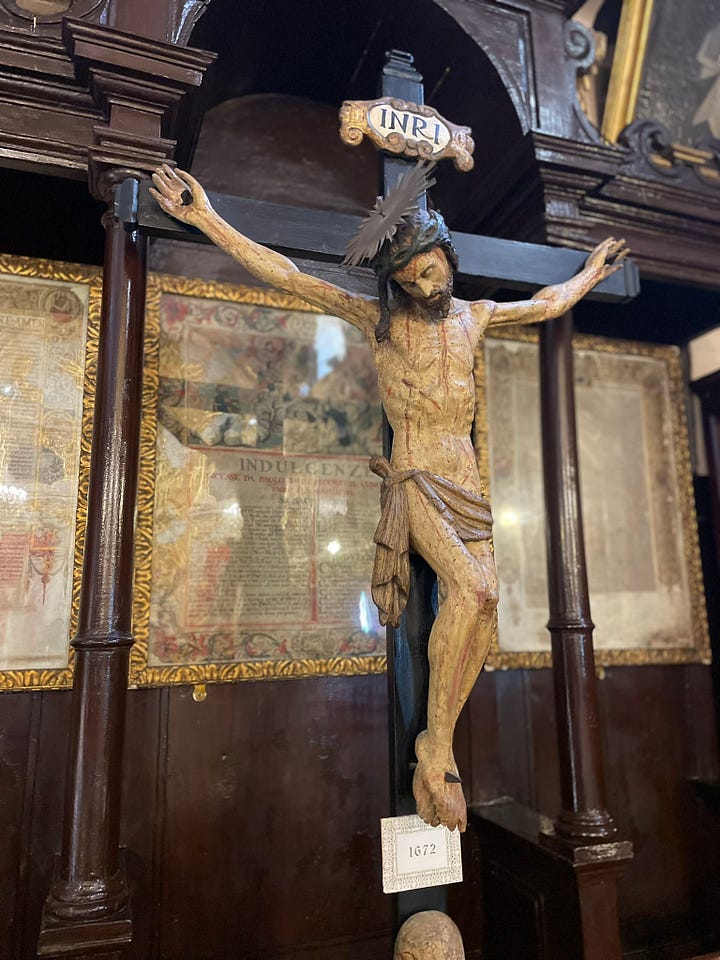
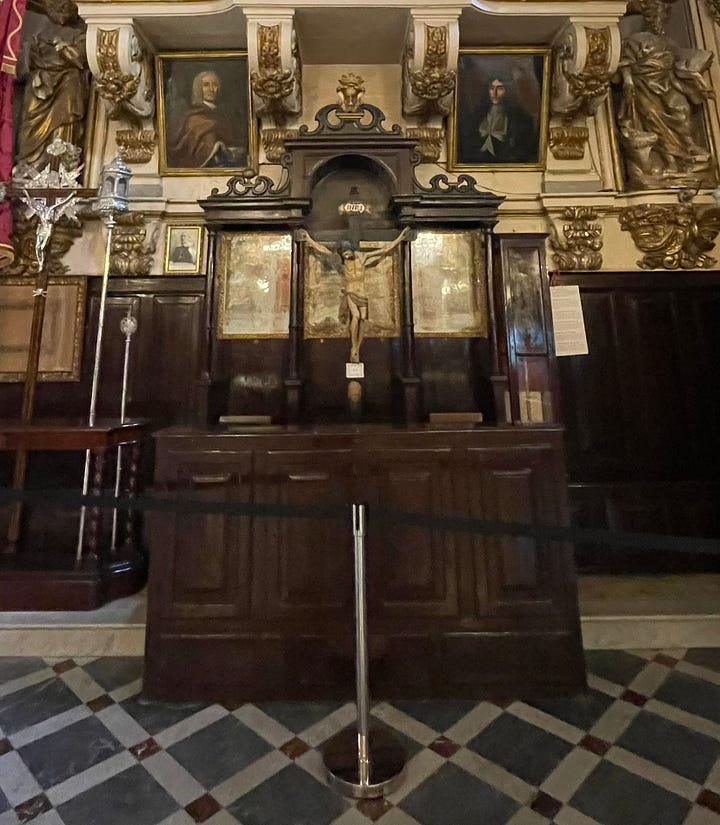
From here you head into the main church, often, as I’ve probably written before, you enter a church in Malta into an absolute Baroque symphony, it always amazes me that you go from quite a simple exterior to an assault on the senses and this church is no less in that. It’s packed with individual chapels with different statuary and shrines to different saints and just the most incredible art. Obviously what we see is the results of centuries of patronage but the workmanship and the attention to detail is really quite stunning. One of the things I’ve learnt on the course is the way architecture in Baroque churches was built to use natural light to highlight the interior and this is a great example of that, light pours in over small chapels through a series of mini domes and of course through the main dome. The ceiling paintings and gilding are amazing, when you consider that all the arts were brought into force together in the Baroque period to create an all round sensual experience you can feel that here, so much beauty.
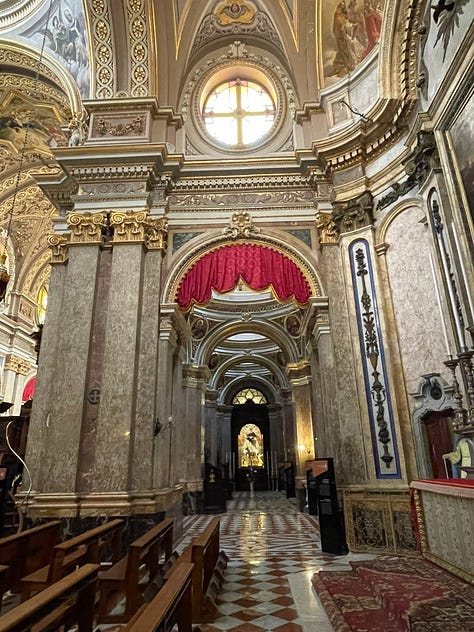
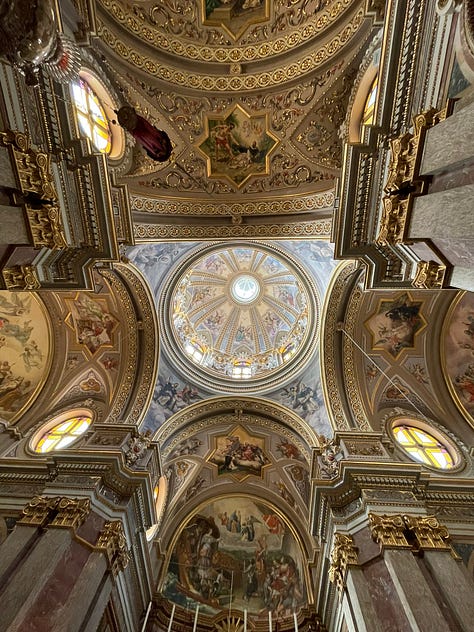
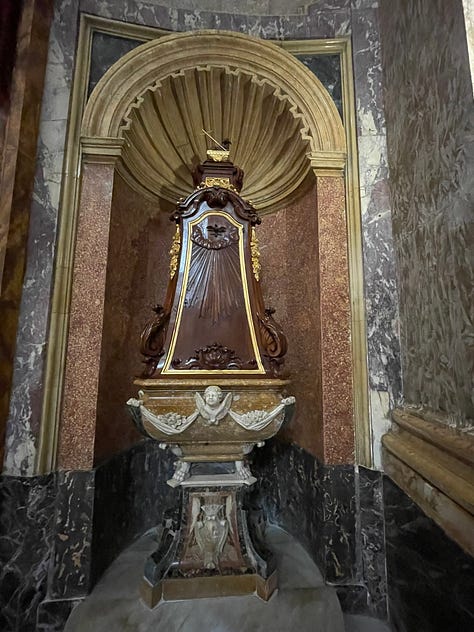

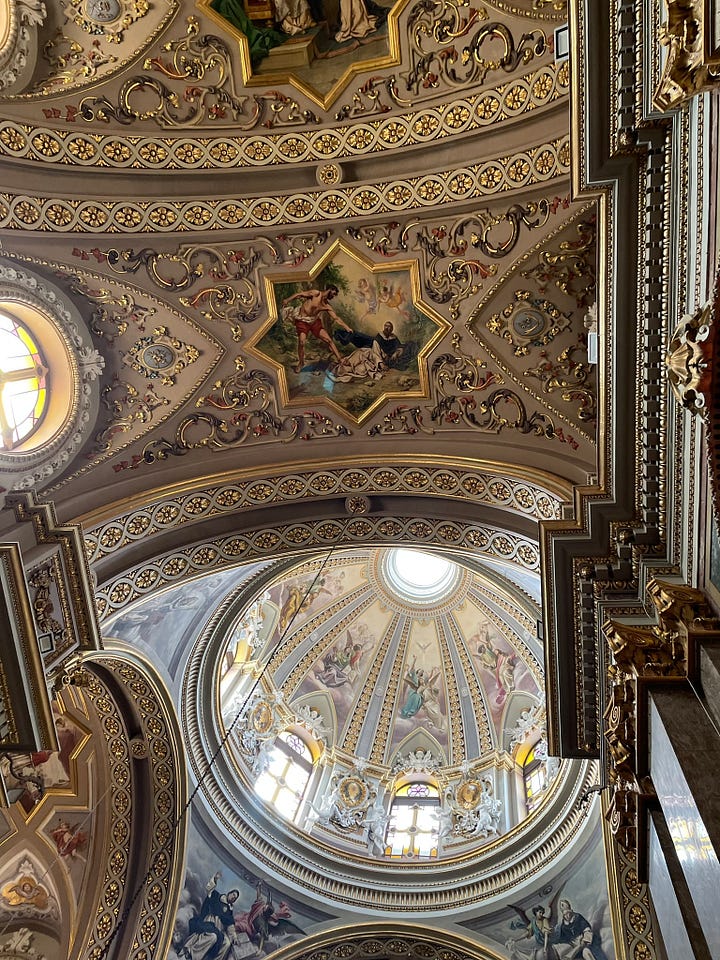
The final stop is the Silver Room which houses sacramental silver with a fantastic carved silver altarfront. Gold and Silver smithing is really strong in Malta, I’ve seen quite a few works in Maltese churches, I suppose it all goes in with the overall Baroque opulence!
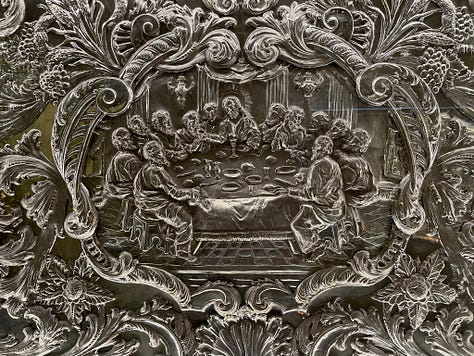

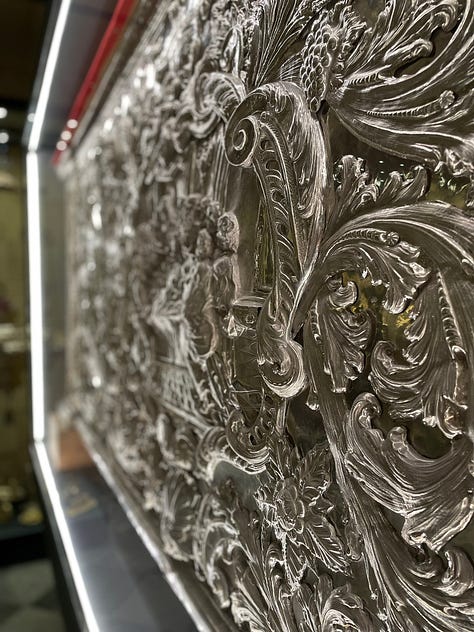


As you may have gathered I really enjoyed this visit, the oratories and the church are part of the overall convent of the Dominican Friars and the museum experience gives us a taste of the histories of the convent. I have focused on the fabric of the building but there is much more than that, the labelling tells us how the friars engaged with the community of Valletta in times of need, through plagues, famine and destitution. The church itself is know locally as Porto Salvo, this shows the connection to the seafaring community in the harbour towns, who adopted the image of the Madonna as their safe haven, often coming to the church to pray and give thanks for a safe sea voyage.
Go along, worth a look!
Rita Fennell
Gallery Tart

